
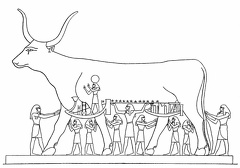 The Sky as a cow
The Sky as a cow Scepters
Scepters Hittite God
Hittite God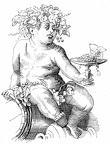 Bacchus
Bacchus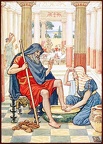 Yea, verily, thou art Odysseus
Yea, verily, thou art Odysseus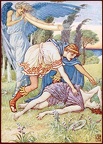 The Wind-god sent a gust from the South
The Wind-god sent a gust from the South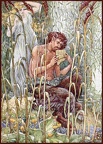 Sweet, piercing sweet was the music of Pan’s pipe
Sweet, piercing sweet was the music of Pan’s pipe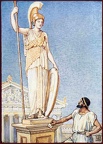 The figure of the goddess was a colossal one
The figure of the goddess was a colossal one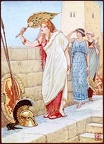 Often she would stand upon the walls of Troy
Often she would stand upon the walls of Troy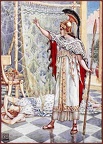 She changed her into a spider
She changed her into a spider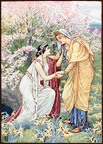 Demeter rejoiced for her daughter was by her side
Demeter rejoiced for her daughter was by her side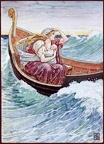 For two days and two nights the boat was tossed hither and thither
For two days and two nights the boat was tossed hither and thither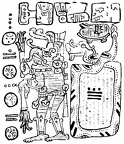 Another representation of the Elephant-headed Rain god
Another representation of the Elephant-headed Rain god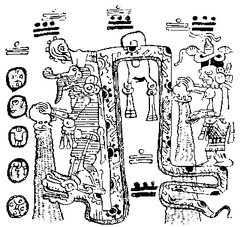 Reproduction of a Picture in the Maya Codex Troano representing the Rain-god Chac treading upon the Serpent's head
Reproduction of a Picture in the Maya Codex Troano representing the Rain-god Chac treading upon the Serpent's head Babylonian Weather God
Babylonian Weather God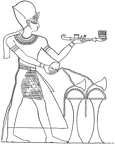 Burning of Incense
Burning of Incense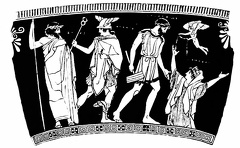 Greek costume of the Classic Period
Greek costume of the Classic Period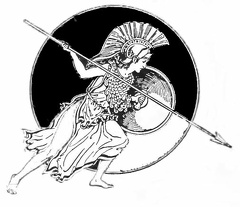 A Goddess
A Goddess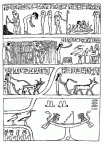 Anhai bowing before her father and mother. The Elysian Fields. From the Papyrus of Anhai (XXIInd dynasty)
Anhai bowing before her father and mother. The Elysian Fields. From the Papyrus of Anhai (XXIInd dynasty)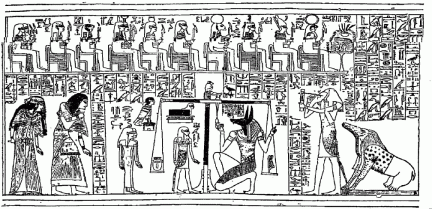 The weighing of the heart of the scribe Ani in the Balance in the presence of the gods
The weighing of the heart of the scribe Ani in the Balance in the presence of the gods The soul of Rā
The soul of Rā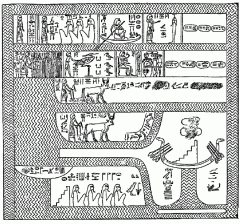 The Elysian Fields of the Egyptians according to the Papyrus of Nebseni (XVIIIth dynasty)
The Elysian Fields of the Egyptians according to the Papyrus of Nebseni (XVIIIth dynasty)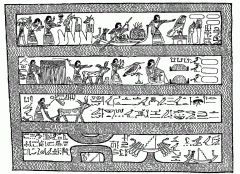 The Elysian Fields of the Egyptians according to the Papyrus of Ani (XVIIIth dynasty)
The Elysian Fields of the Egyptians according to the Papyrus of Ani (XVIIIth dynasty) The Creation
The Creation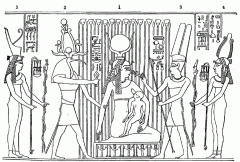 Isis suckling Horus in the papyrus swamp
Isis suckling Horus in the papyrus swamp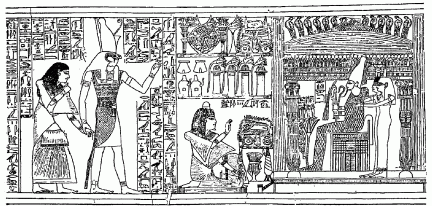 Horus, the son of Isis, leading the scribe Ani into the presence of Osiris, the god and judge of the dead
Horus, the son of Isis, leading the scribe Ani into the presence of Osiris, the god and judge of the dead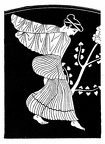 Dancing Bacchante
Dancing Bacchante Venus Pompeiana
Venus Pompeiana Serapis
Serapis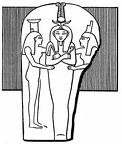 Pharaoh Rameses III as Osiris (Sarcophagus relief)
Pharaoh Rameses III as Osiris (Sarcophagus relief)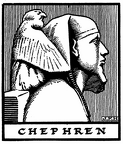 Pharaoh Chephren
Pharaoh Chephren Isis and Horus
Isis and Horus Hariti
Hariti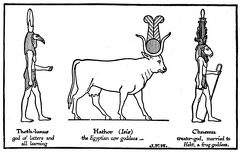 Egyptian Gods—Thoth-lunus, Hathor, Chnemu
Egyptian Gods—Thoth-lunus, Hathor, Chnemu Egyptian Gods—Set, Anubis, Typhon, Bes
Egyptian Gods—Set, Anubis, Typhon, Bes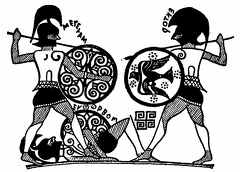 Combat between Menelaus and Hector
Combat between Menelaus and Hector Chinese Image of Kuan-yin
Chinese Image of Kuan-yin Athene of the Parthenon
Athene of the Parthenon Serapis
Serapis Pasht
Pasht Isis
Isis Horus
Horus Athor
Athor Anubis
Anubis Osiris
Osiris Typhon
Typhon Thoth
Thoth Neith
Neith Kneph
Kneph Pthah
Pthah Chem
Chem Hapimou
Hapimou Mando-Ra
Mando-Ra Amun-Ra
Amun-Ra Winged Sun of Thebes
Winged Sun of Thebes Mythological Personage
Mythological Personage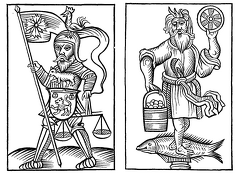 Idols of the Saxons
Idols of the Saxons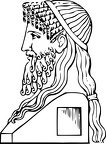 Bacchus
Bacchus Paris on Mount Ida
Paris on Mount Ida



